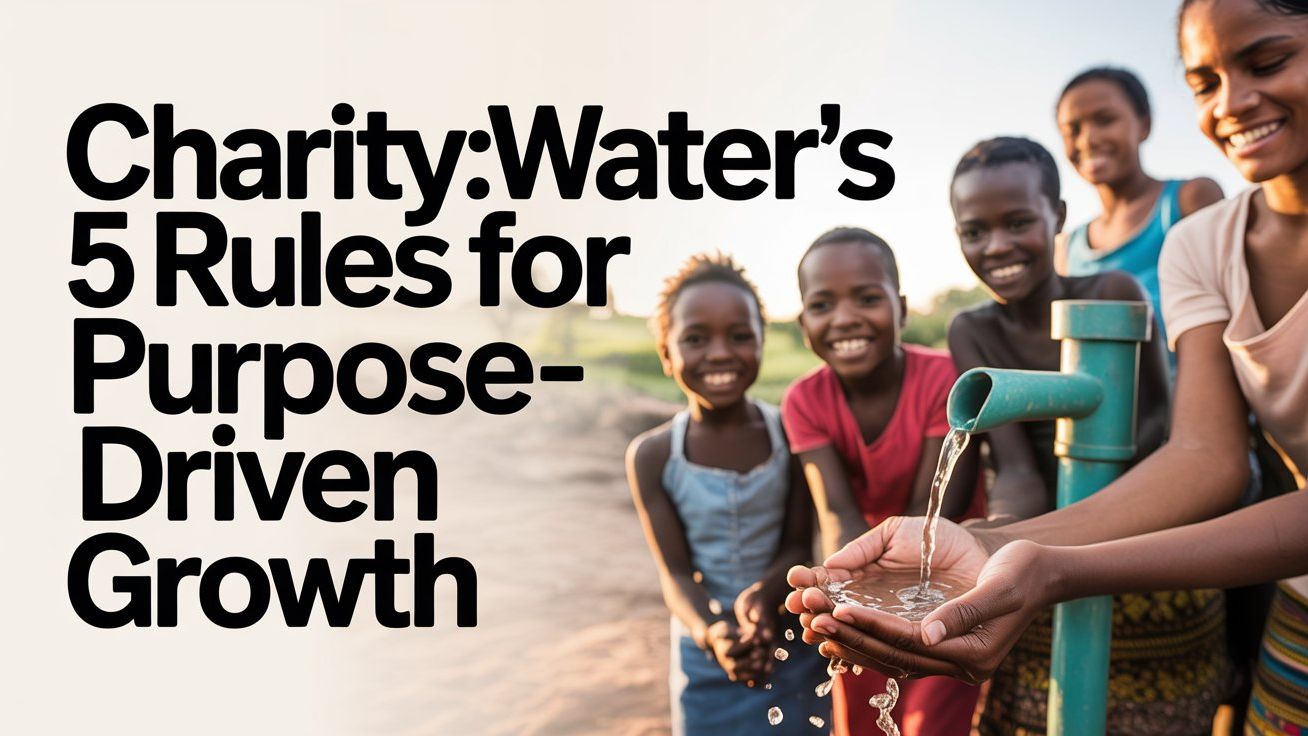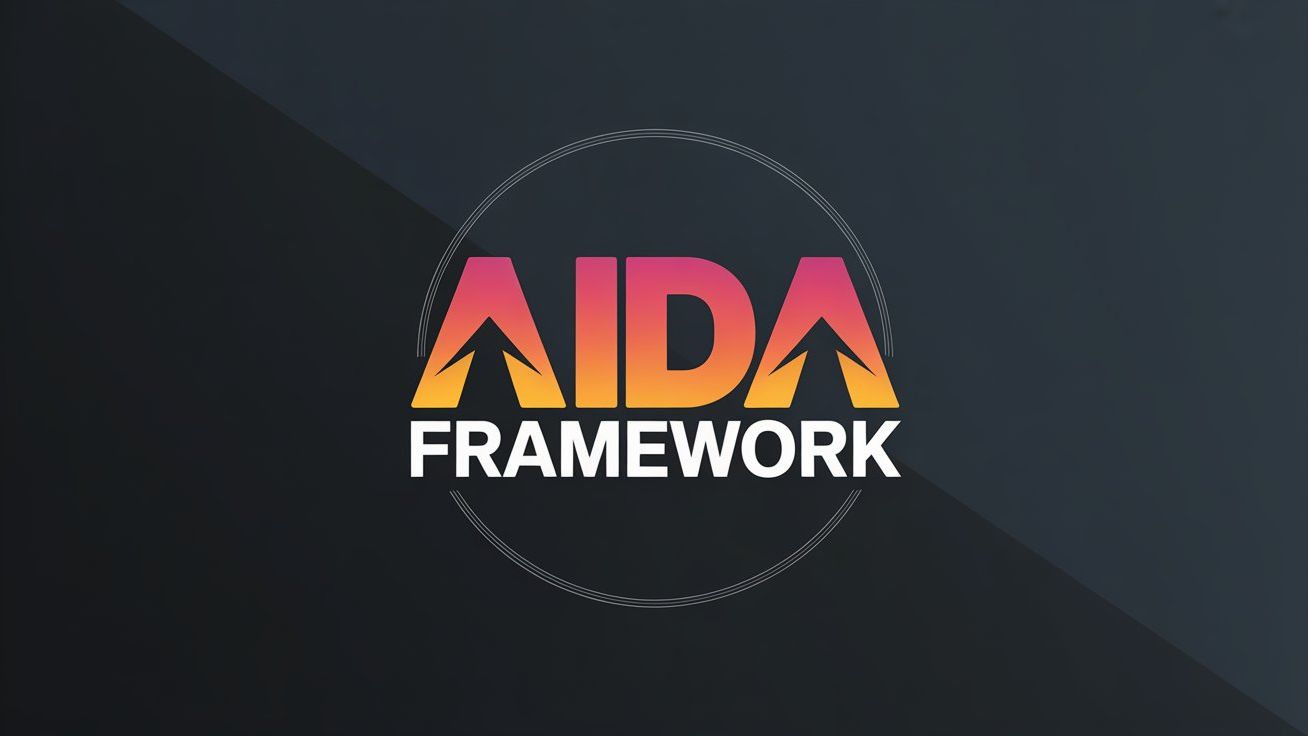
Speaking to Two Audiences: A StoryBrand Guide for Nonprofits
Aug 02, 2023Nonprofits face a unique marketing challenge. They need to appeal to two distinct audiences with their branding and messaging – donors and program participants.
How do you craft your organization's story and messaging to resonate with both groups?
This is a tricky balancing act.
Your content needs to appeal to donors' desires to make an impact while showcasing the meaningful journeys of the people you serve.
In this article, we'll explore how nonprofits can use the StoryBrand Framework to address this dual audience conundrum. We'll cover:
- The basics of StoryBrand and why it matters
- Tips for anchoring in your participant’s journey
- Aligning donor messaging to your core brand story
- Tailoring content across key channels - website, email, social media
- Key principles for balancing a dual audience strategy
Let’s dive in!
The StoryBrand Framework
StoryBrand is a proven marketing framework created by Donald Miller to help companies clarify their messaging and connect with customers.
The core concept is structuring your brand narrative similar to a movie script. You position your audience as the hero and yourself as their guide.
There are 7 key elements of the StoryBrand Framework:
- Hero - Your customer or participant is the hero. The story focuses on their transformation.
- Guide - Your brand serves as the guide leading them on their journey.
- Problem(s) - What challenge or pain point are you helping the hero overcome? (plain external, internal, & philosophical)
- Plan - How does your product or service lead the hero to success?
- Call to Action - What do you want the hero to do next? Sign up, donate, apply?
- Success - How does the hero look after successfully completing their journey?
- Failure - What happens if the hero does nothing?
This structured storytelling allows you to connect emotionally with your target audience. When done right, it inspires action.
For nonprofits, the “hero” is your program participant. The donor serves as a “mentor” supporting the hero.
Let’s look at how to apply this framework with a dual audience.
Anchoring in Your Participant’s Journey
When shaping your brand story, start with your participants’ journey. Put them at the heart of your narrative.
Follow these tips when centering your story around your participants:
- Emphasize their challenges and pain points upfront
- Showcase how your programs guide them to success
- Use powerful imagery of the people you serve in action
- Share inspiring stories and testimonials from real participants
- Spotlight specific examples of lives changed due to your work
Doing this grounds your brand purpose in their transformation. It also appeals to donors by highlighting meaningful impact.
One example is the nonprofit Room to Read. Their site leads with images of the students they serve pursuing their dreams of education. The messaging is all centered around the “hero’s journey” of these students rising up through literacy.
This creates an emotional connection with donors by showing real impact.
Another example is Charity:Water. Their story leads with a moving video following a young girl’s journey to get clean water. This participant-focused narrative draws donors in.
No matter what cause your nonprofit serves, aim to lead with their hero’s journey.
Aligning Donor Messaging to Your Core Story
Once you have anchored in your participant’s story, you can layer in messaging to appeal to donors.
Here are some tips for aligning your donor messaging:
- Communicate shared values between donors and participants
- Show how donor support directly fuels the participant’s success
- Use emotional hooks related to their hero’s journey - hope, joy, gratitude
- Emphasize how donors are key “mentors” in the journey
- Share meaningful supporter testimonials and updates
Succinctly explain how donor gifts change lives. Use language, photos, and stories that tap into their desire to make an impact.
Habitat for Humanity does this beautifully. Their marketing highlights future homeowners and the meaningful impact of affordable housing. Their donor messaging invites supporters to “be part of the vision” to create hope and change lives.
Segmenting Your Database
With your core story down, an important next step is segmenting your database.
Divide your contacts between:
- Donors
- Program participants/clients
- Volunteers/partners
- Board members
- Employees
- Newsletter subscribers
Grouping your lists allows you to customize communications. Send targeted appeals and relevant stories to each audience.
For example, when sending your monthly email newsletter:
- Tailor the donor version with urgent appeals and updates on participant success thanks to their support.
- Send participants a version highlighting program announcements, success stories of other participants, and upcoming events.
- Make the volunteer version all about how they make an impact, with opportunities to get involved.
Personalize subject lines, content, calls-to-action, and imagery for each group. This cultivates deeper engagement across all your audiences.
Website Tips for a Dual Audience
Your website often serves as the first touchpoint with your nonprofit. It needs to appeal to both participants and donors.
Here are tips for shaping an effective dual-audience website:
- Lead with the participant’s journey on the homepage. Use photos, videos, and messaging centered around the people you serve.
- Create separate “Get Help” and “Donate” pages tailored to each audience. The donation page can focus on donor benefits and impact. The participant page highlights how to get involved with your programs and services.
- Include clear calls-to-action above the fold - e.g. “Apply Now” and “Donate Today.” Make it easy for both groups to take action.
- Feature stories and testimonials from both participants and donors throughout the site. This nurtures emotional connections.
- Use pop-up or banner ads to deliver targeted messages to each group as they browse. For example, donors might see an urgent appeal, while participants see an event invite.
Optimizing conversion paths for each audience leads to results. Participants should easily find program details, while donors can quickly give.
Speaking to Both Audiences on Social Media
Social media provides a powerful channel to share your nonprofit’s work. However, appeal to participants and donors requires a nuanced approach.
Here are some best practices for social media success with a dual audience:
- Spotlight inspiring participant stories that donors will find meaningful. Photos and videos of lives impacted by your work.
- Thank and recognize donors by name for their support. Tag them so it shares to their network.
- Go behind-the-scenes to make donors feel part of the journey. Show volunteer events, program activities, etc.
- Respond to participants who engage with your content. Guide them to helpful resources.
- Use hashtags related to your cause and location so participants can find you and get involved.
- Ask questions and run polls to spur engagement from both groups.
- Limit direct fundraising appeals on social. Focus on storytelling. Then link to donation pages.
Mastering this balance takes testing and optimization. Pay attention to which types of content resonate best with each audience.

Crafting Targeted Email Appeals
Email is a workhorse channel for nonprofit marketing. It allows you to make targeted appeals and share updates.
As you segment your lists, follow these tips for email success:
For participants:
- Send program announcements, event invites, and registration info
- Share stories about other participants
- Offer resources, tools, and training opportunities
- Highlight upcoming milestones and successes
For donors:
- Send appropriate appeal messages based on donor history
- Communicate urgent funding needs related to key programs
- Share inspiring stories and updates on participant success
- Report back on measurable outcomes from recent gifts
- Use matching gift offers or give donor gift options
- Invite major donors to exclusive events
Email makes timely communication easy. Use it to nurture each audience with relevant messaging tailored just for them.
The Importance of Stewardship
Nonprofits depend on loyal supporters and participants to sustain their work. That’s why stewardship is so vital.
Stewardship simply means showing donors and participants how much you appreciate them. Some ideas:
- Send handwritten thank you notes when gifts are received
- Call donors directly to thank them for major gifts
- Highlight givers in email, social media, and print materials
- Share photos and stories that showcase the impact of donations
- Survey participants and donors to get input on programs
- Send small gifts like calendars, cards or videos around the holidays
- Invite loyal supporters to tour your facilities and see programs in action
- Host special events for major donors and volunteers
- Promptly address questions and concerns brought to you by anyone involved
Stewarding relationships leads to loyalty. Show all your audiences how much you value them through gratitude, engagement, and transparency.
Key Principles for Nonprofit Dual Audience Marketing
Let’s recap the core principles that help nonprofits appeal to both participants and donors:
- Anchor your brand story in your participant’s journey. Make them the hero.
- Align donor messaging with that core purpose and impact. Invite them to play a supporting role.
- Speak to shared values and emotions. Tap into donors' desire to create change.
- Segment your audience lists to send tailored communications. Customize for each group.
- Balance participant and donor messaging across all channels - website, email, social.
- Steward relationships with both groups through listening, gratitude and transparency.
- Test what content and offers work best with each audience. Then optimize based on results.
Dual audience marketing is tricky but doable. Stay true to your mission while appealing to all those involved in fulfilling it.
Over to You
Reaching both participants and donors effectively requires work. But the effort pays off through expanded impact.
Share your thoughts and experiences in the comments below. If you need help applying StoryBrand to your nonprofit's messaging, let's talk!








